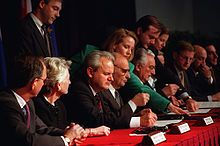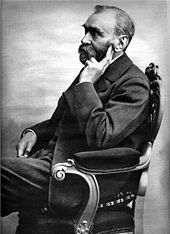This is your morning Open Thread. Pour your favorite beverage and review the past and comment on the future.
Find the past “On This Day in History” here.
December 19 is the 353rd day of the year (354th in leap years) in the Gregorian calendar. There are 12 days remaining until the end of the year.
On this day in 1776, Thomas Paine publishes The American Crisis.
These are the times that try men’s souls; the summer soldier and the sunshine patriot will, in this crisis, shrink from the service of his country; but he that stands it now, deserves the love and thanks of man and woman. Tyranny, like hell, is not easily conquered; yet we have this consolation with us, that the harder the conflict, the more glorious the triumph.
When these phrases appeared in the pages of the Pennsylvania Journal for the first time, General George Washington’s troops were encamped at McKonkey’s Ferry on the Delaware River opposite Trenton, New Jersey. In August, they had suffered humiliating defeats and lost New York City to British troops. Between September and December, 11,000 American volunteers gave up the fight and returned to their families. General Washington could foresee the destiny of a rebellion without an army if the rest of his men returned home when their service contracts expired on December 31. He knew that without an upswing in morale and a significant victory, the American Revolution would come to a swift and humiliating end.
Thomas Paine was similarly astute. His Common Sense was the clarion call that began the revolution. As Washington’s troops retreated from New York through New Jersey, Paine again rose to the challenge of literary warfare. With American Crisis, he delivered the words that would salvage the revolution.
The American Crisis was a series of pamphlets published from 1776 to 1783 during the American Revolution by eighteenth century Enlightenment philosopher and author Thomas Paine. Thirteen numbered pamphlets were published between 1776-1777 with three additional pamphlets released between 1777-1783. The writings were contemporaneous with the early parts of the American Revolution, during the times that colonists needed inspiring.
They were written in a language the common man could manage and are indicative of Paine’s liberal philosophies. Paine signed them with one of his many pseudonyms “Common Sense”. The writings bolstered the morale of the American colonists, appealed to the English people’s consideration of the war with America, clarified the issues at stake in the war and denounced the advocates of a negotiated peace.

 On this day in 1918, the House of Representatives passed the
On this day in 1918, the House of Representatives passed the 

 On this day in 1995,
On this day in 1995,  On this day in 1642,
On this day in 1642,  New Zealand is one of the most recently settled major landmasses. The first known settlers were Eastern Polynesians who, according to most researchers, arrived by canoe in about AD 1250-1300. Some researchers have suggested an earlier wave of arrivals dating to as early as AD 50-150; these people then either died out or left the islands. Over the following centuries these settlers developed into a distinct culture now known as Maori. The population was divided into iwi (tribes) and hapu (subtribes) which would cooperate, compete and sometimes fight with each other. At some point a group of Maori migrated to the Chatham Islands where they developed their distinct Moriori culture.
New Zealand is one of the most recently settled major landmasses. The first known settlers were Eastern Polynesians who, according to most researchers, arrived by canoe in about AD 1250-1300. Some researchers have suggested an earlier wave of arrivals dating to as early as AD 50-150; these people then either died out or left the islands. Over the following centuries these settlers developed into a distinct culture now known as Maori. The population was divided into iwi (tribes) and hapu (subtribes) which would cooperate, compete and sometimes fight with each other. At some point a group of Maori migrated to the Chatham Islands where they developed their distinct Moriori culture.
 On this day in 1946,
On this day in 1946,  In 1953,
In 1953,  On this day in 1901,
On this day in 1901, 
 The Joint Committee on the Conduct of the War was a
The Joint Committee on the Conduct of the War was a  John and I are in our Dakota kitchen in the middle of the night. Three cats – Sasha, Micha and Charo – are looking up at John, who is making tea for us two.
John and I are in our Dakota kitchen in the middle of the night. Three cats – Sasha, Micha and Charo – are looking up at John, who is making tea for us two.